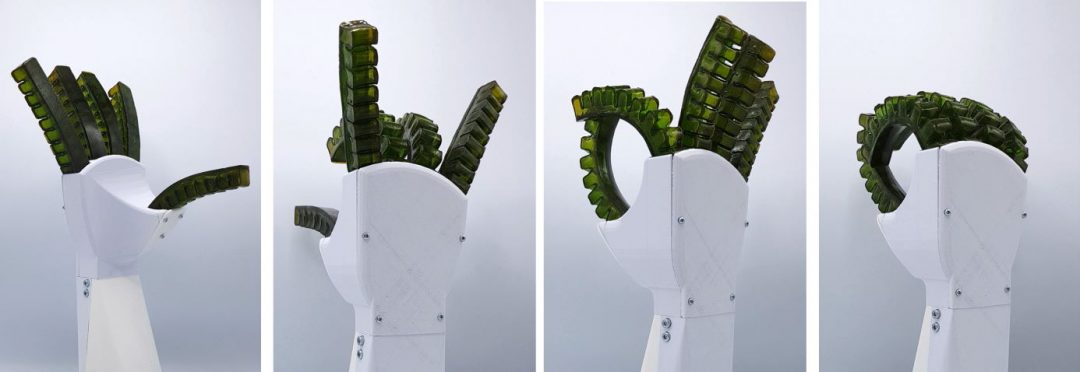Pain is, of course, viewed as something negative, but it has a purpose in that it protects us. Pain is an alarm system that prevents further injuries. Now, researchers aim to transfer this natural alarm system to robots.
Over the next three years, researchers from the Vrije Universiteit Brussel, University of Cambridge, École Supérieure de Physique et de Chimie Industrielles de la ville de Paris (ESPCI-Paris), and Empa will be working together with the Dutch polymer manufacturer, SupraPolix , on the next generation of robots.
The research team rationalizes that soon, robots will not only be found in factories and laboratories, but will be assisting us in our immediate environment. They will help us in our homes to reduce our workloads, create safer environments, and support elderly and disabled people in their daily tasks. Robots and humans will work side-by-side and it is therefore important that this is done in a safe way.
In order to enable manipulation of fragile objects with dexterity and to guarantee people’s safety, many of the next generation robots are built from flexible, soft materials. However, these ‘soft robots’ are vulnerable to cracks and cuts themselves. Feeling pain will prevent these robots from serious injury as the repairs needed to get them back to work often take time and can be costly.
Controlled Damage Healing
The research team aims to go one step further by developing technologies that allow soft robots to self-heal from damage. Thus, repair processes would not involve human’s aid. Self-healing materials have been made available. These flexible plastics can completely heal themselves when they are damaged.
According to the scientists, embedded functional material will be able to sense and actuate the robots’ self healing process. Similar to pain, the soft robot can detect and localize damage and then take the necessary steps to heal the defect.
“We are obviously very pleased to be working on the next generation of robots,” says project lead, Bram Vanderborght of Vrije Universiteit Brussel. “Over the past few years, we have already taken the first steps in creating self-healing materials for robots. With this research we want to continue and, above all, ensure that robots that are used in our working environment are safer, but also more sustainable. Due to the self-repair mechanism of this new kind of robots, complex, costly repairs may be a thing of the past.”
Feature image: Robotic hand made out of self healing material that can heal at room temperature. Image: Vrije Universiteit Brussel

















